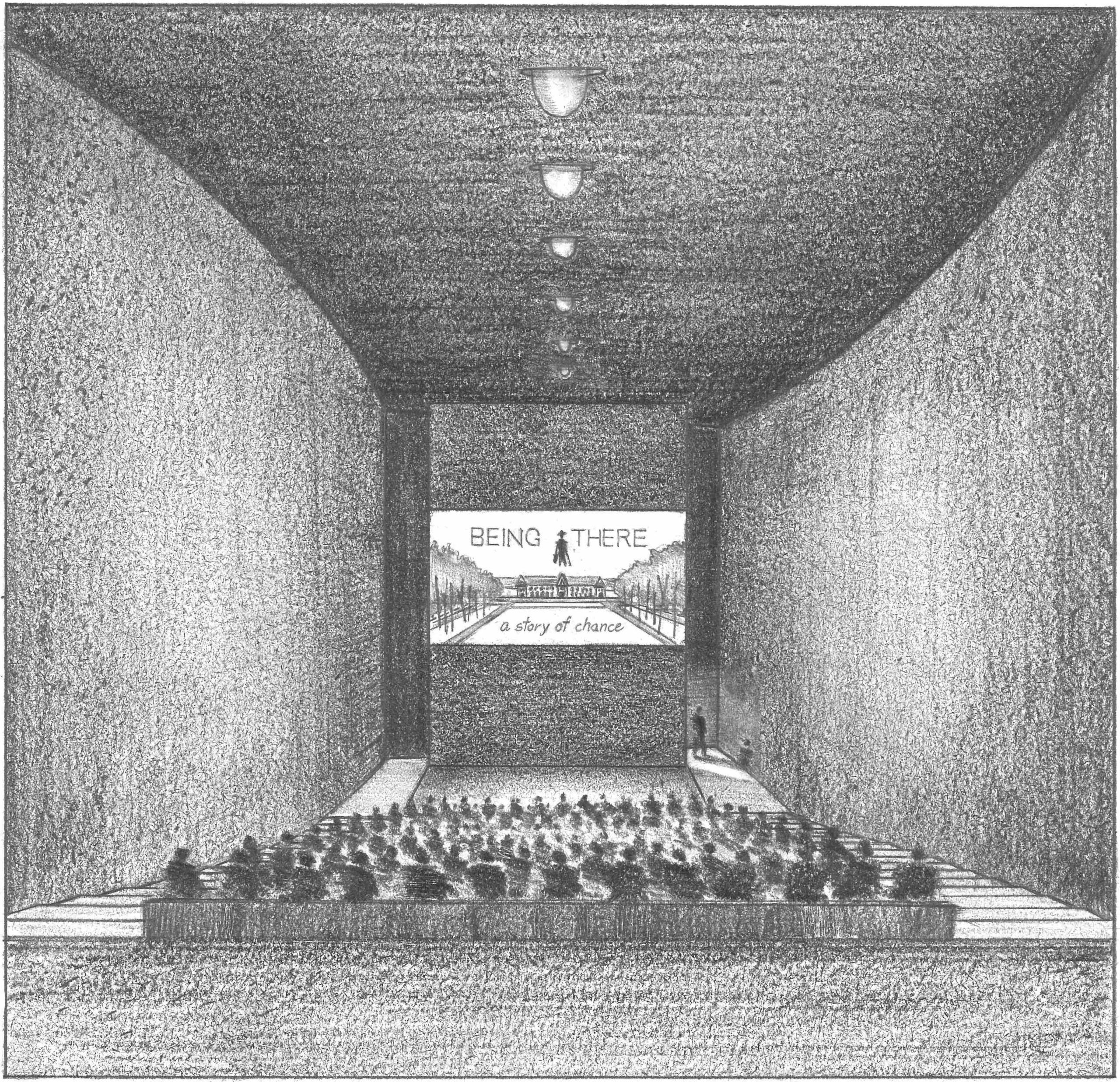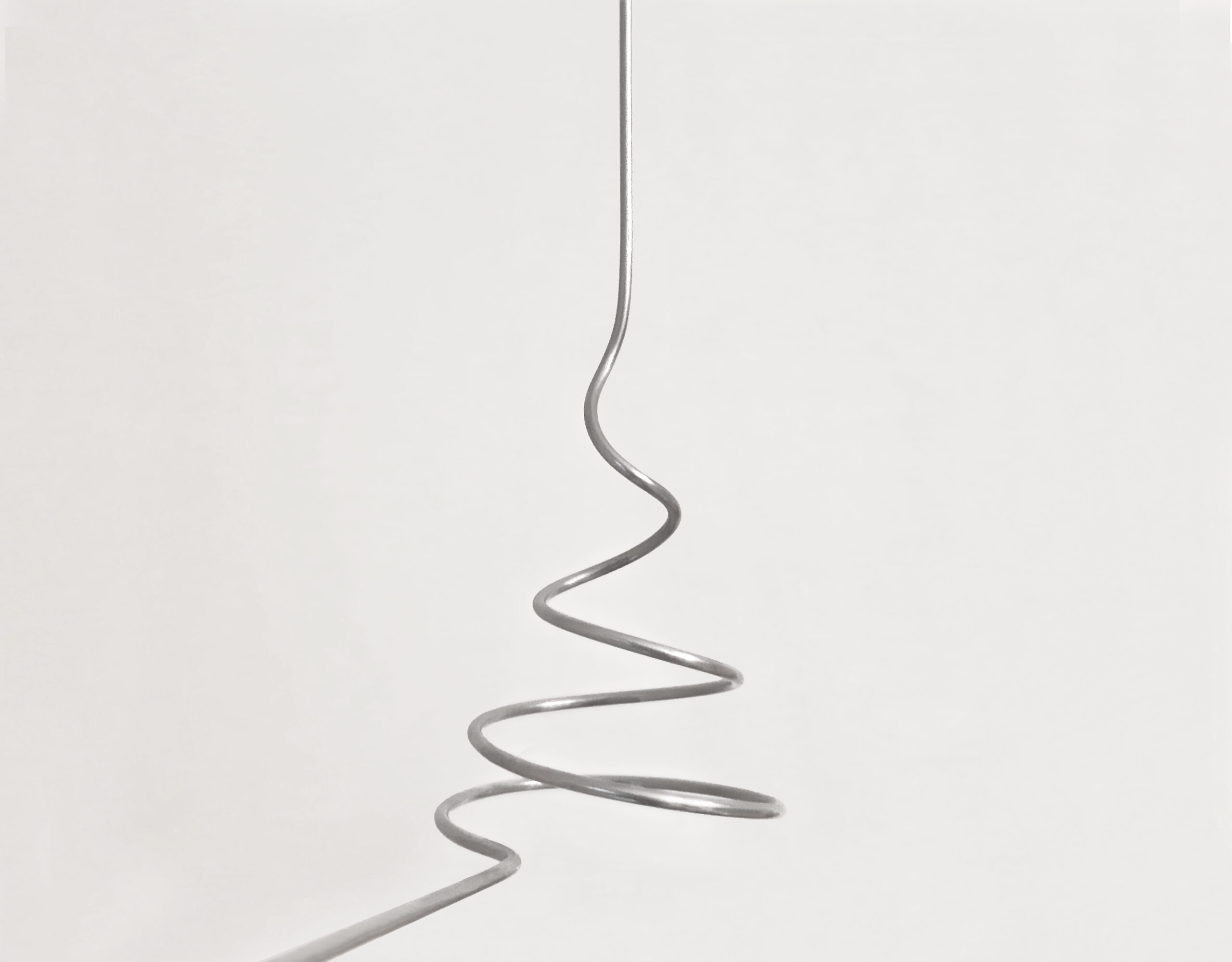
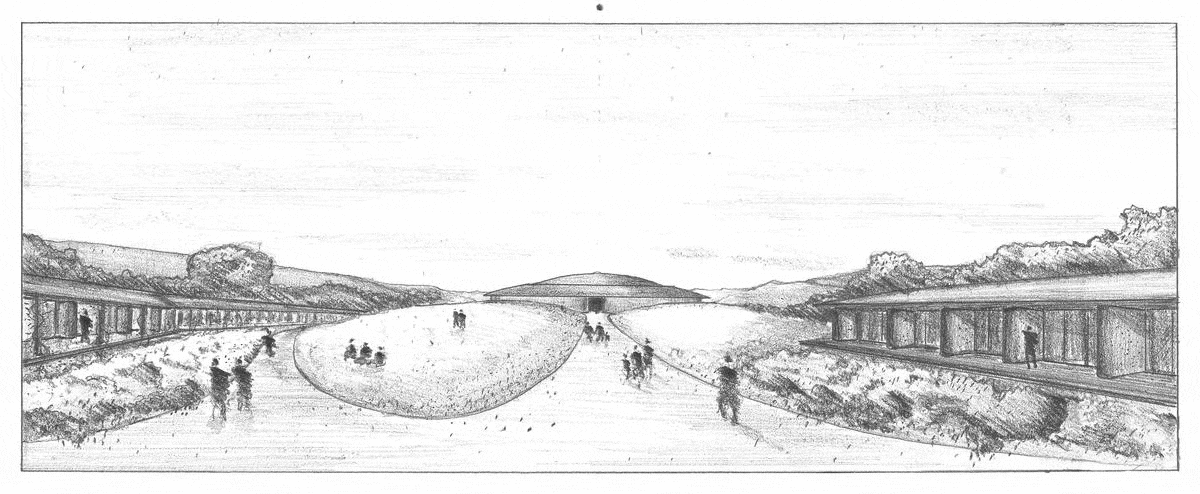
Back to the new architecture
Architecture, as the art of building and dwelling, is not only meant to be useful but serves a higher purpose. Just like other meaningful arts, it enriches one’s life and uplifts one’s spirit.
The Center is conceived as a spiral path of contemplation. Thus, the central space – its essence – is surrounded by three concentering circles. The outer circle is the Contemplation ring (1) where one can intimately connect with nature and the horizon. Middle circle, the – Ascension hall (2) – is a slope that raises gently and stands for a path to the higher level. The inner circle is called the Ring of light (3). It consists of a passage, softly illuminated by a crevice in the roof. From here, one steps onto the central platform surrounded by the vast empty space of the Floating dome (4).
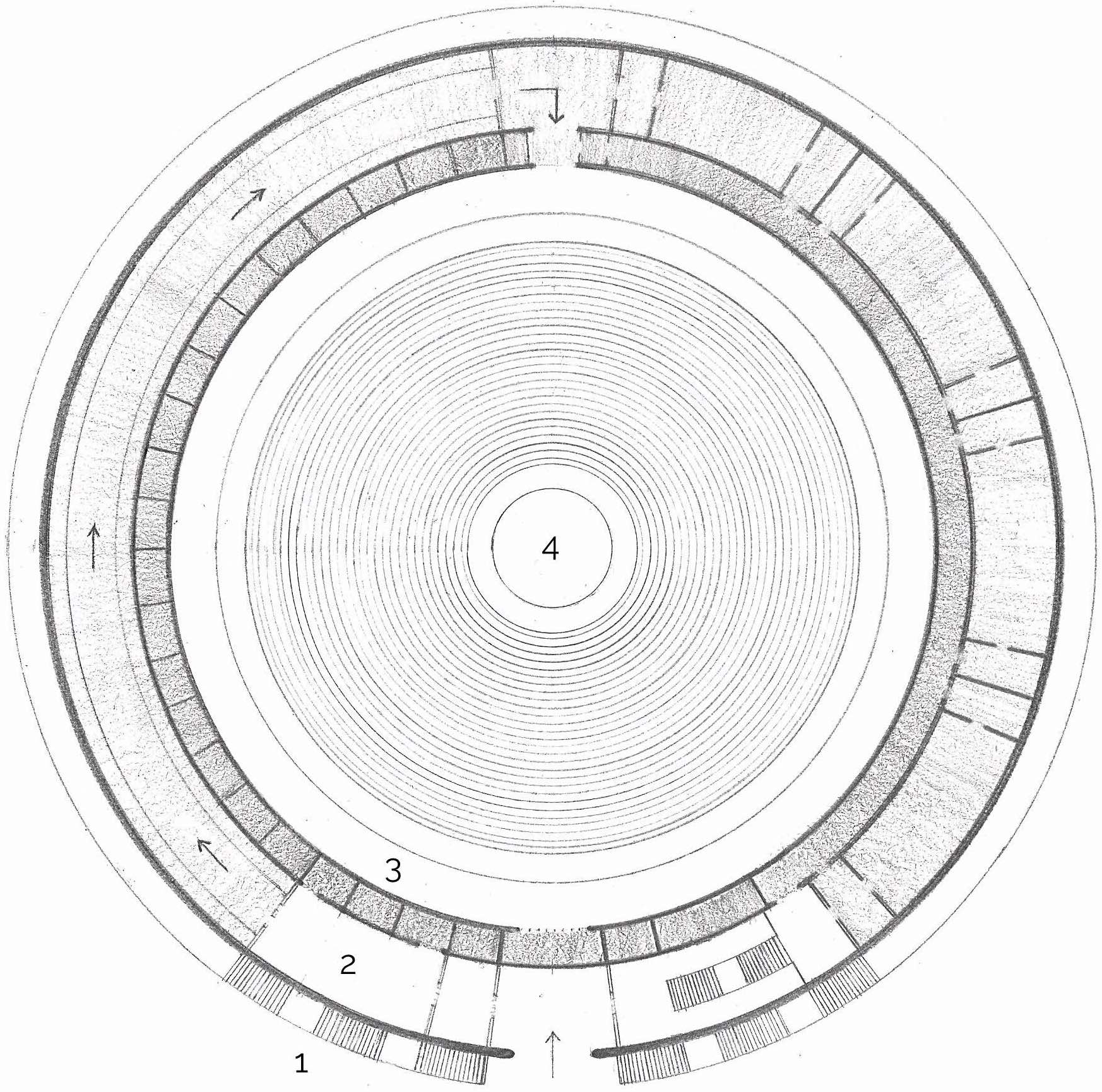
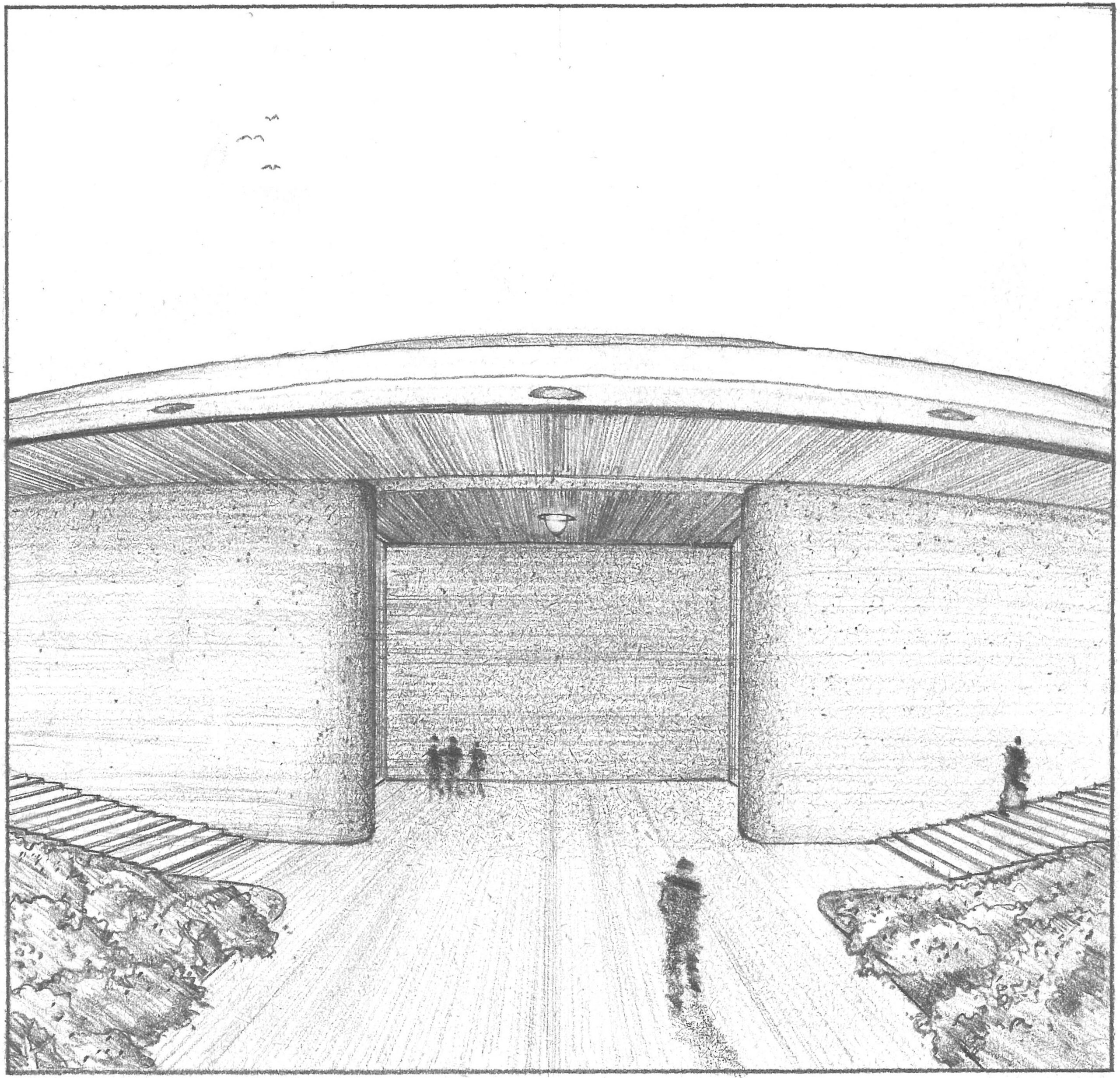
Interconnectedness
A border is a place where different elements interact and where the inside meets the outside. If the architecture is successful it will bring about a sort of alchemy – it will transform the light, the earth, and the materials of the building into something far greater.
Therefore, a strong sense of interconnectedness with the landscape is of paramount importance. The dirt from the excavations at the building site is returned to the earth in the form of a green hill that surrounds the building; the walls of the building are made of rammed earth. The house suddenly becomes like a plant; it belongs to the earth and grows out of it.
The facade of the Humanity Center is not static and passive but plays an active role in one’s experience of the landscape. The stairway to the Contemplation ring is the beginning of an infinite journey around the horizon.
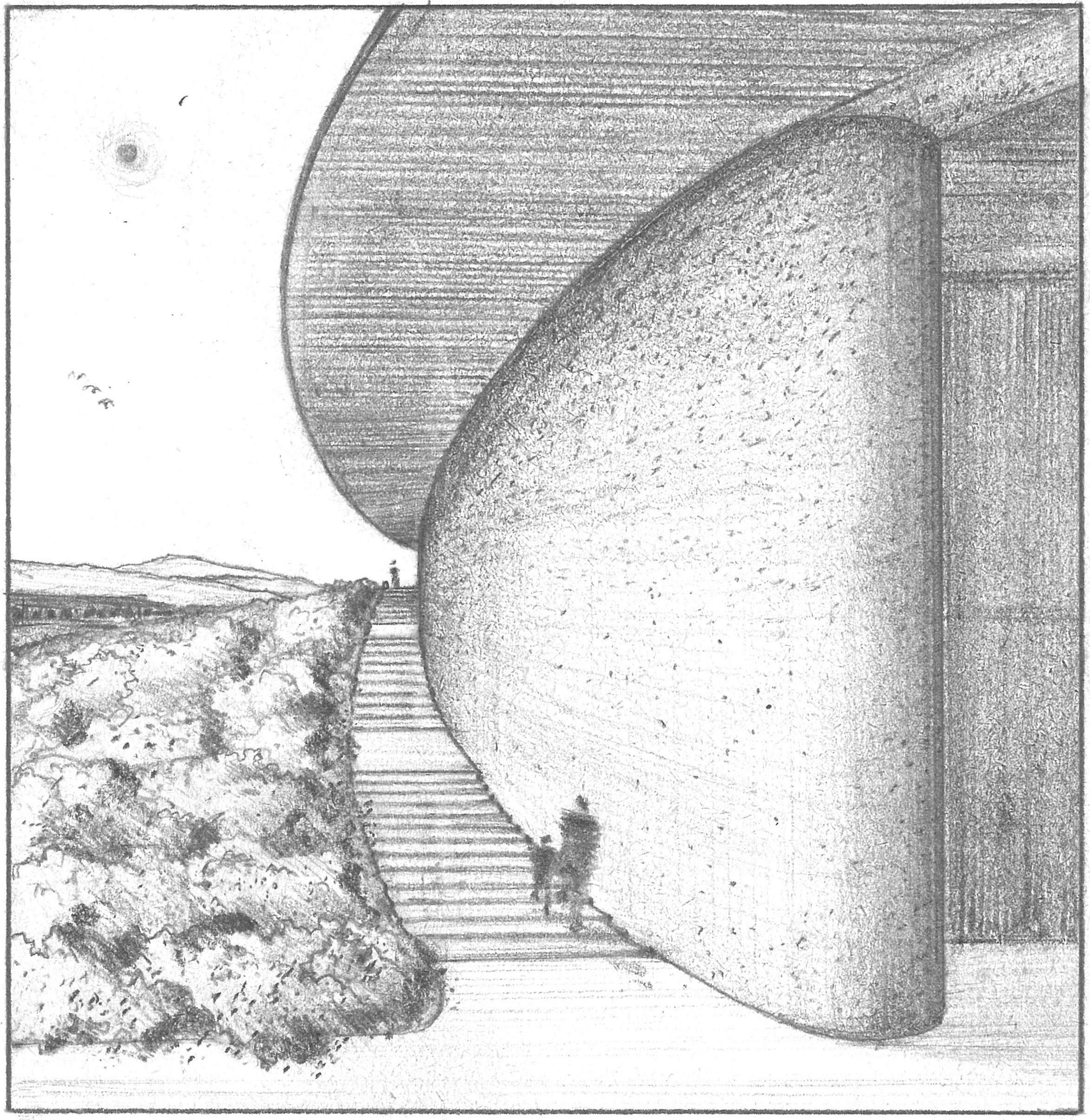
Contemplation ring
I used to take long strolls around a lake which, on one side, was surrounded by an old forest. One day I noticed an obvious fact that had always been there but had somehow eluded my grasp. The lake had a sunny and a shady side, and I noticed how attuned the vegetation on the shore was to the subtle changes in lighting. From that moment on, walking around the lake not only offered a very different experience but also presented me with possibilities for consciously connecting with different atmospheres.
The contemplation ring of the Humanity Center provides the visitor with similar opportunities. The structure of the building consists of a curved frame, in and through which nature manifests itself in the form of an intimate connection between the human being and the horizon. Throughout the seasons the diverse vegetation of the garden enveloping the house evokes contrasting, yet ever-changing atmospheres. Sheltered by the overhanging roof and the wall in the back, the Center engenders various places for contemplation and beckons the visitor to sit down and embrace the stillness.
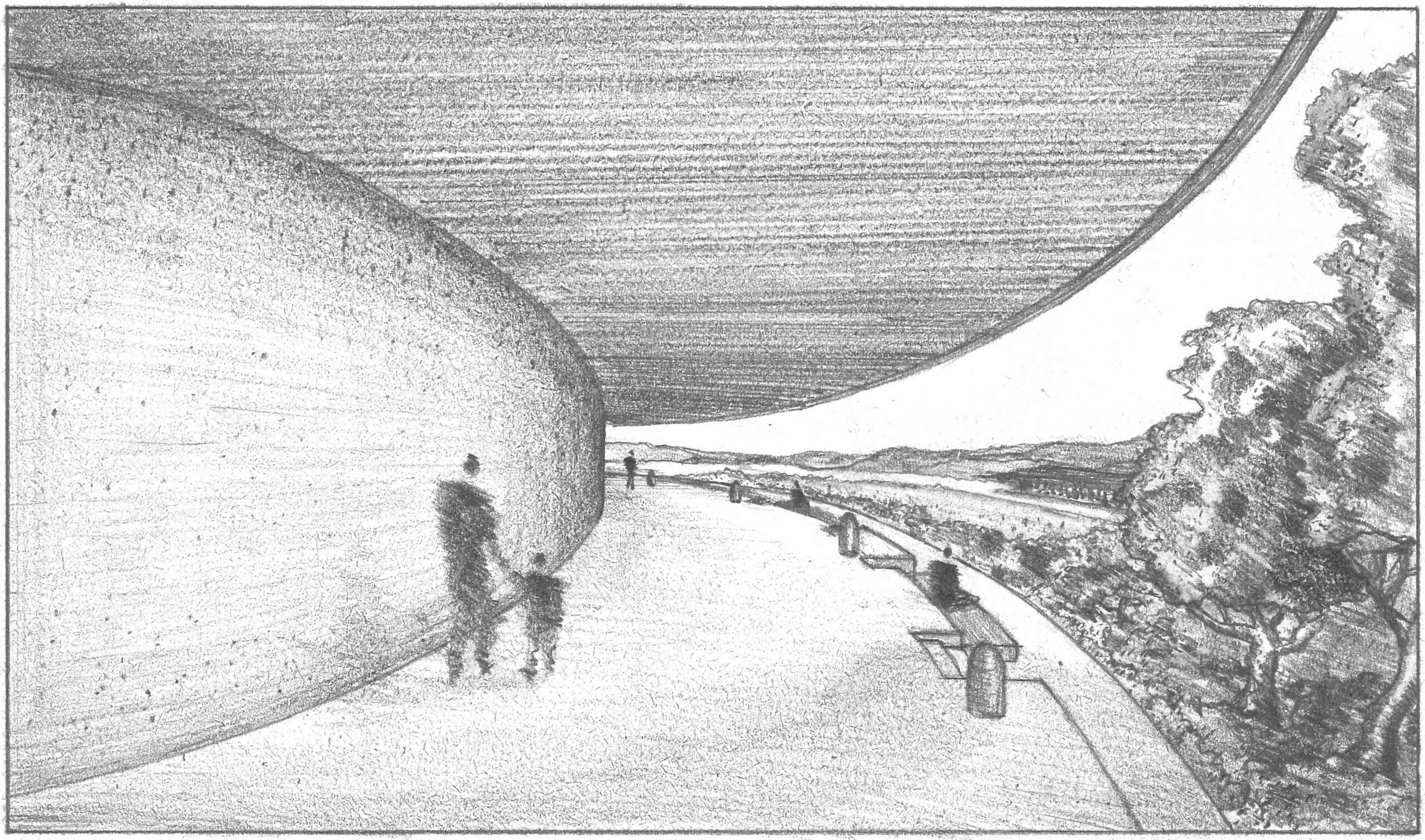
Ascension hall
While the outer contemplation ring is designed to evoke a plethora of different experiences, the ascension hall aims to give birth to a very unique type of experience: that of rising from the darkness into the light.
The experience of ascent starts at the ground level where one is engulfed in deep shadows. Here, one is surrounded by a vast empty space, and the only light source which penetrates the darkness comes from the spotlights collecting the natural light from the outside and projecting it into the interior. I call these spotlights “light drops”. They are made of solid glass and hang from the ceiling like drops from wet leaves after a rainy day. Walking up the slope, the space becomes more enclosed, more intimate, and illuminated. At the end of the ascension hall, the person traversing it faces the direction from where she initially started her ascent, and I like to think that this feature constitutes an architectural reflection of the process of self-enquiry. From here, one steps into the Ring of light.
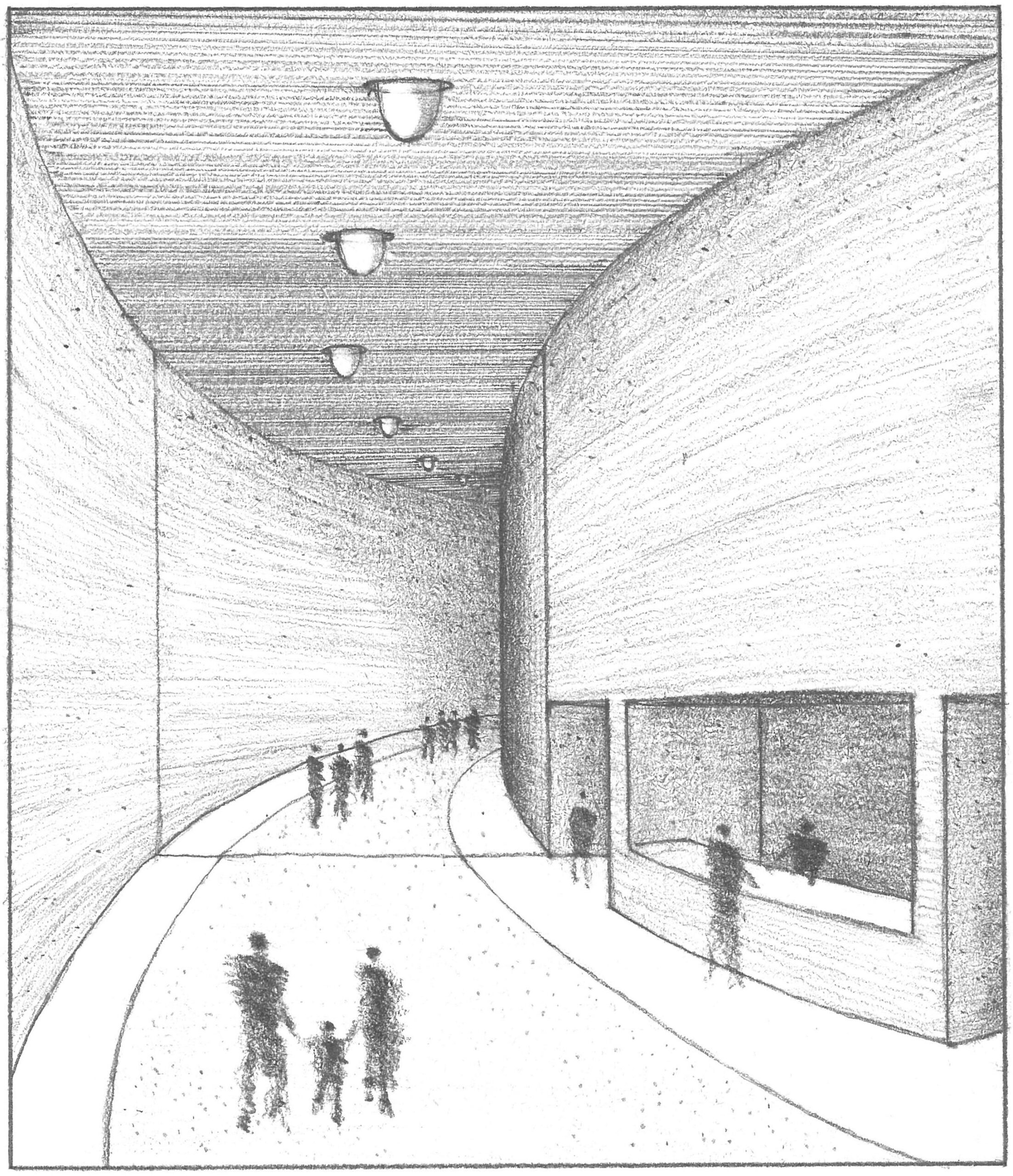
Ring of light
When I was a child, I used to build houses. They all expressed what is believed to be an archetype of architecture – a strong sense of shelter. Among those early constructions, I vividly remember a treehouse, a house in the earth, a house in the tall grass, a house in the bush, a wooden pyramid house, and a snowy pine-tree house. The latter was very special to me. I discovered it after a very snowy winter day when the thick blanket of snow had covered the whole landscape. Fresh snow gathered on the pine tree, bending its branches to the ground. Through a small crevice, I could enter into a closed cone-shaped space. It was warm, tender, and filled with the scent of fresh pine leaves. The interior was suffused with soft light, which shone timidly through a snow dome. It was pure magic! The new Humanity Center strives to embody some of that magic.
The architectural vision behind the construction of the central space is the feeling of lightness. The roof hangs from the rim of the enclosing walls like a flower hangs from a stem. Throughout the day, natural light seeps through the crevice, creating subtle and playful alterations in the illumination of the interior. What is more, the defused natural light encircles the interior and constitutes a Floating dome that floats above the central space.
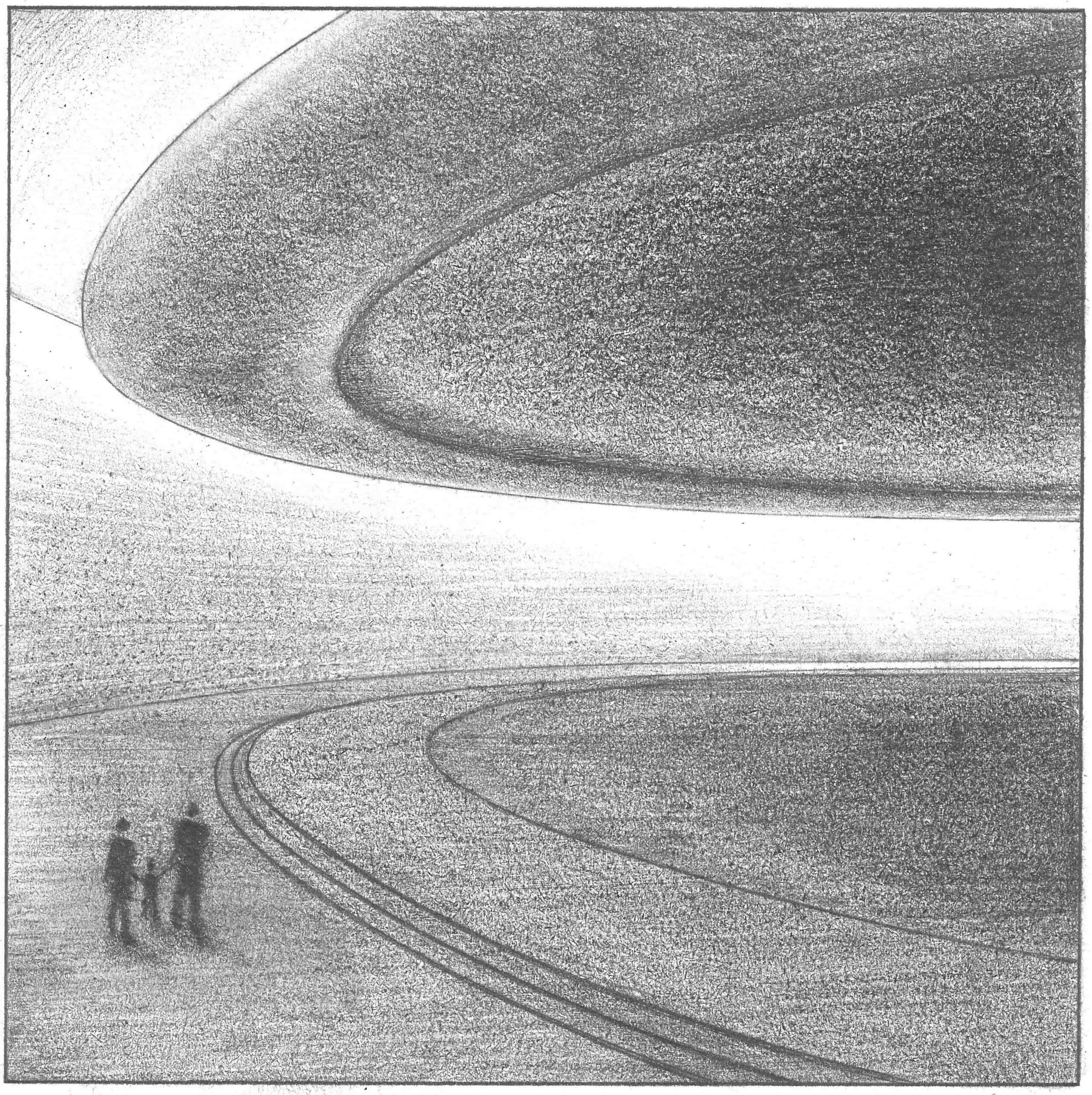
Floating dome
I am very fond of the idea of different people meeting in the same place under the same roof. For this reason, I was, from the very beginning of the creative process, inspired to build a single roof that would cover the whole of its interior.
In tune with the ever-changing lighting atmospheres, the interior can serve various purposes. Vertically adjustable rings of the central hall can bring forth different auditorium shapes: a flat surface suitable for any kind of movement (dance), a trough furnished with sitting rows for art performances, concerts, and lectures, or a crest for silent contemplation.
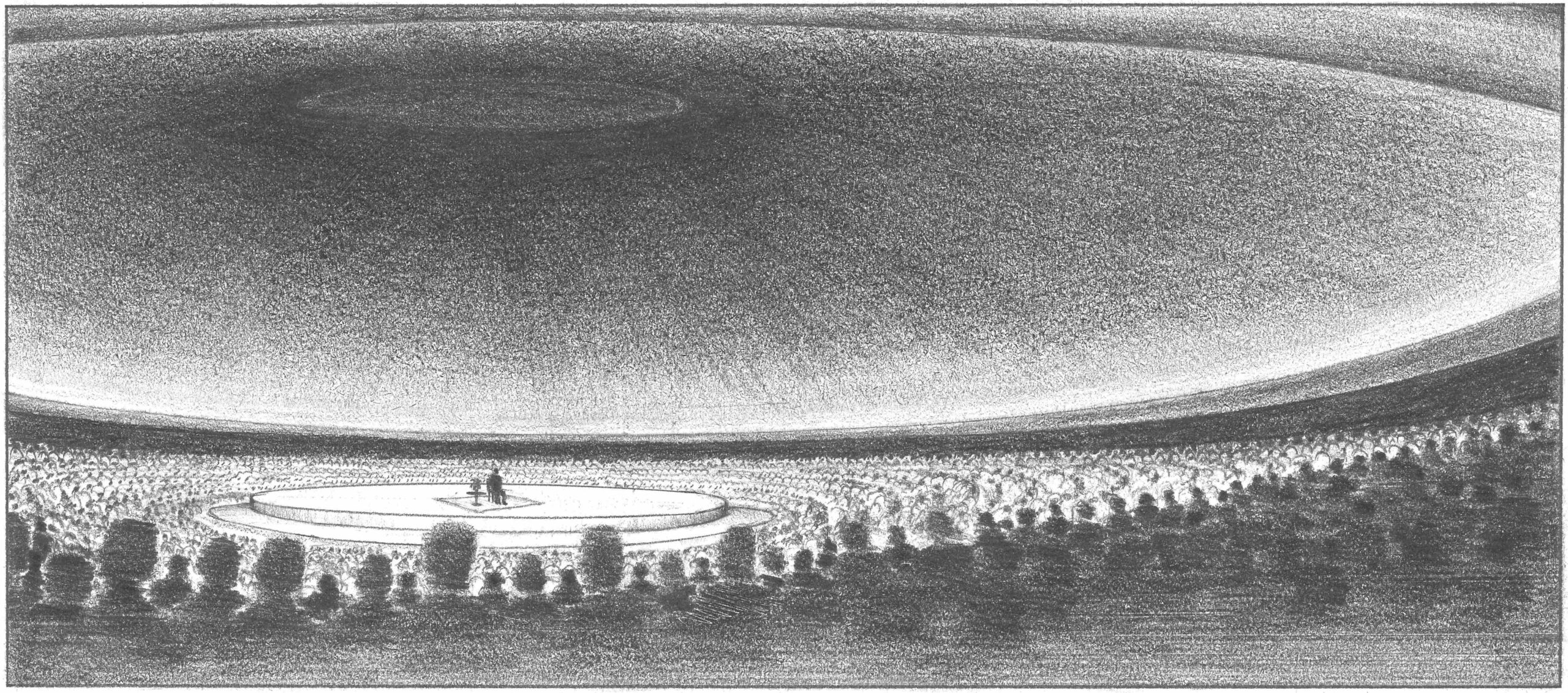
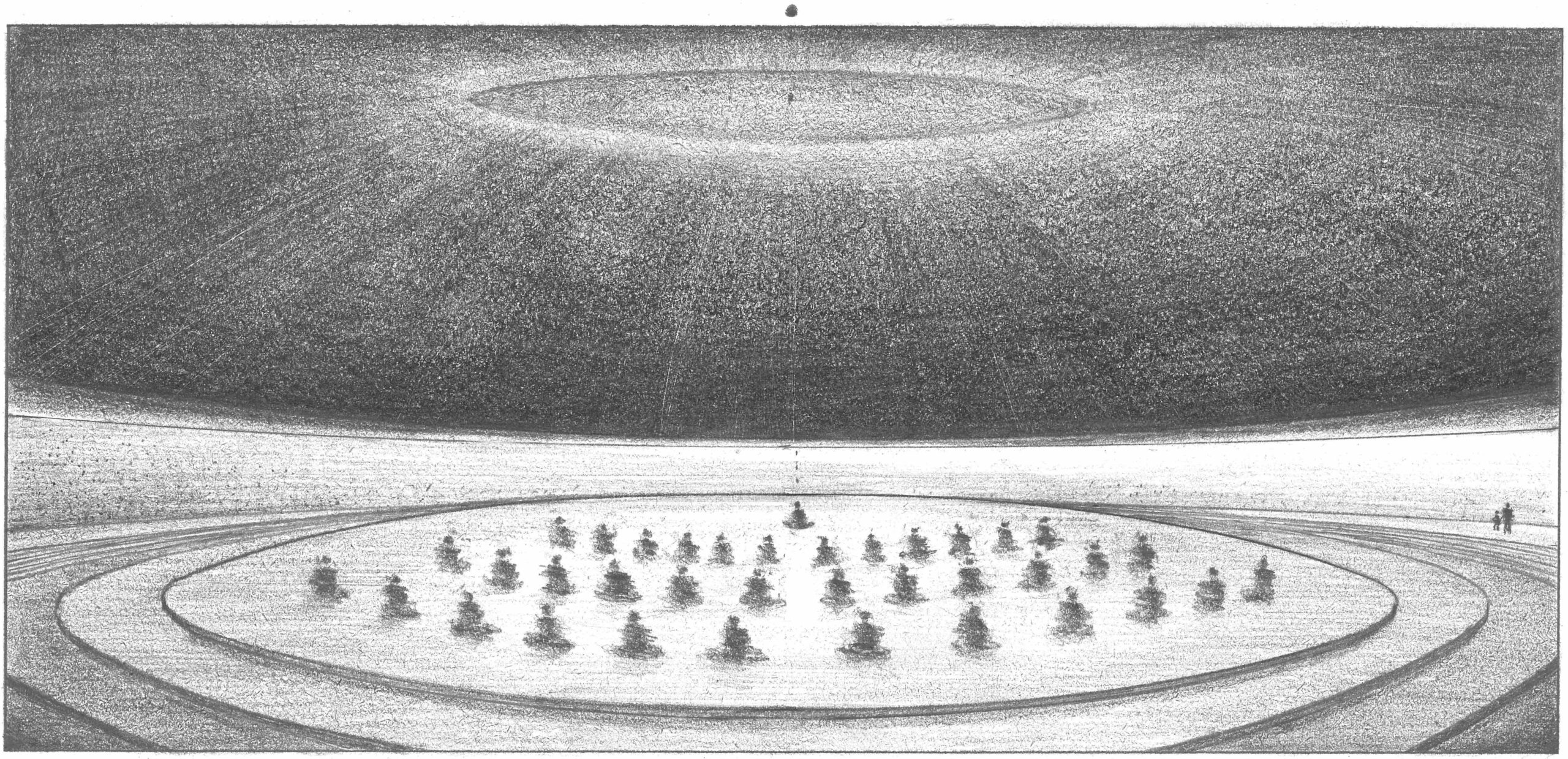
A chance
Not so long ago, I was passing by a house in the city, whose interior had recently been renovated. I was surprised by the fact that another round of renovation works was taking place and I started wondering about human aspiration: “What is the highest ideal that we, moderns, strive towards?”
We live in a time when people from the poorest parts of the world are still trying to satisfy their basic needs and improve their material conditions, while the Western civilization, for the most part, has already managed to deal with these issues in a relatively sufficient manner. As a human society, we are presented with a challenge: How to live in a world where there is enough of everything? We know that the outer world could always be “improved upon”, but still one cannot but wonder: What is the highest goal that humans strive towards, and is there an architecture that could help accomplish it?”
